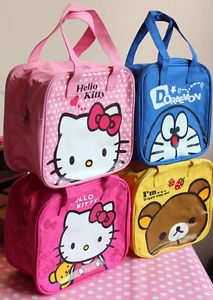Like this post? Help us by sharing it!
As the world takes notice of the overuse of plastic and the devastating impact it has on the environment, InsideJapan travel consultant, and member of our Sustainability Committee, Steven McCready made it his mission to travel as sustainably and plastic free as possible in Japan. But just how easy (or challenging) is it?
Going plastic free in Japan
Since returning to the UK after living in Japan, I have been purposefully reducing the amount of plastic I use. While living there it was painful to watch checkout workers and other service staff adding ever more packaging to already heavily packaged purchases. It was even more painful to feel that as a foreigner with slowly developing language skills I couldn’t or shouldn’t say anything. However, on my recent visit, I risked embarrassment, confusion, and even failure by trying to avoid using any of the following:
- Takeaway cups
- Plastic bottles
- Plastic bags
- Takeaway food packaging
- Plastic wrapped shibori (moist towel for use before a meal)
- Disposable chopsticks (usually made of cheap wood)
To make this happen, I travelled with the following items:
- Reusable Rice Husk Coffee Cup (my favourite from home)
- Reusable steel water bottle
- Tote bag and/or rucksack
- Tupperware box
- Chopsticks in a carry case
How did I get on? Well, let’s start with the success stories.
Coffee cups
I didn’t use one takeaway cup! I visited several coffee shops and had success in getting a hot or iced coffee or tea every single time. It was a massive relief to find that staff were not surprised by my reusable cup, and although I speak Japanese, it seemed easy to order without any language skills. Simply saying, “small coffee”, and pointing to the cup was enough. I visited brilliant independent coffee shops in Kyoto, such as School Bus and Len’s, but also had no problems in mainstream places like Doutur and Tully’s Coffee too. I even found a shelf of reusable cups for sale in Tully’s.
Verdict: If you like tea and coffee, definitely take your reusable cup to Japan.

Water bottles
I managed to get away with only one inadvertent use of a plastic bottle. In the incredible Menya Taiga ramen joint in Kanazawa I ordered Oolong Tea thinking it would be served from a big jug, as it often is in Japan, but unfortunately, I was handed an open bottle instead. Otherwise, my water bottle proved very useful. There aren’t many water fountains, but in combination with water jugs in restaurants, asking restaurant staff, and my hotel room tap, I had more than enough access to water to keep me hydrated.
Verdict: I fully recommend taking your water bottle to Japan.
Plastic bags
I did use one plastic bag in Japan; it had been taped up for me before I’d even had the chance to use my favourite phrase of this trip, “fukuro wa iranai” (“I don’t need a bag”). Warning: you will receive a plastic bag unless you specify otherwise. I used an assortment of Japanese phrases, many of which you can find here, but I do think most Japanese people would understand, “no bag”. Don’t try to add too many polite words in these instances, as they tend to add a little confusion over what you may have said.
Verdict: Carry a tote bag or rucksack if you plan on making any purchases.
Now for the reality check.
Tupperware
I struggled to use my Tupperware box and chopsticks through a combination of confusion, forgetfulness on my part, and mild embarrassment. They did come in handy on a few occasions, but more than anything I just committed to sitting in restaurants for most of my meals.
Verdict: If you have time, try sitting in the restaurant to save on takeaway plastic.
Oshibori (disposable flannels)
Oshibori are often served as a hot, damp flannels in proper restaurants, but most of the time you will see them provided as disposable towelettes in plastic wrapping.
Verdict: The realisation that even if I didn’t use the oshibori, they were still thrown in the bin was a painful one.
How close is Japan to going plastic free?
Overall, there were reasons for optimism, but Japan is not reacting quickly to the plastic crisis. I think part of what being a good traveller is about is not only showing respect for the norms of the country you are visiting but bringing positive habits that do as little damage as possible to the environment you are enjoying. It’s not quite there yet but I have every hope that going plastic free in Japan will be possible in the near future.
So, pack up your reusable coffee cup and remember how to say “no bag!” (“fukuro wa iranai”) on your trip to Japan. Get in touch with our Japan travel experts to find out more.




